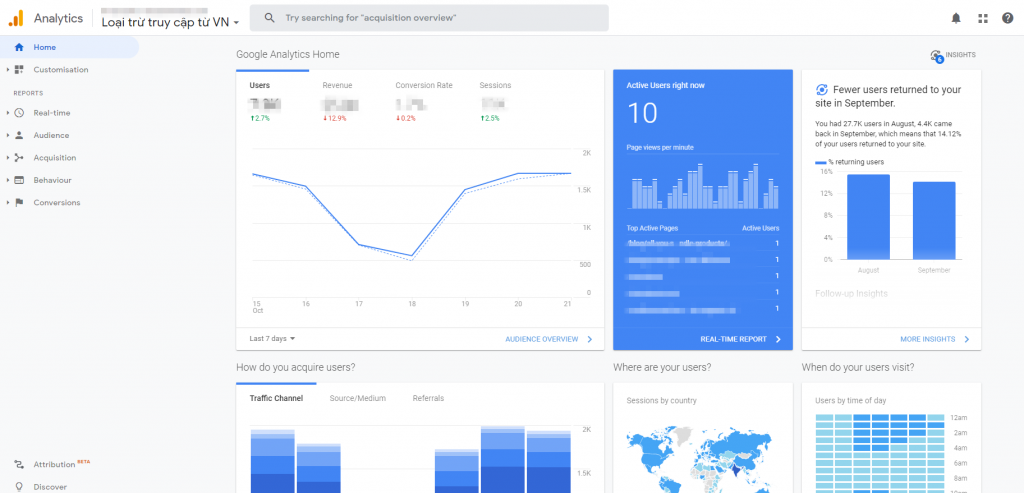Running an e-commerce business is a complicated process. It’s not just about building a basic online store.
Business owners need different software and solutions like CRM, business intelligence tools, accounting software, reporting suites, and many more to fulfill operational needs.
These solutions need to be integrated into e-commerce sites for different purposes. They minimize human involvement and save businesses lots of costs and time.
For that reason, e-commerce integration is an unskippable topic for new online merchants.
When it comes to e-commerce integration, the most frequently asked questions are:
- Why third-party ecommerce integrations matter for e-commerce?
- What are the most vital ecommerce integrations?
- How to integrate a third-party solution into an e-commerce website?
So, if you’re questioning those, let’s read the whole article carefully!
I – Why Third-Party E-commerce Integrations is Important for E-commerce
Table of Contents
1.1 Streamline multi-step business processes
The great benefit of third-party integrations in e-commerce is streamlined multi-step processes for both shoppers and store admins.
In shoppers’ view, they love a seamless and fast shopping experience that allows them to order successfully without moving from one place to another place.
For example, instead of leaving your store to complete payment, it’s much better to do it immediately in place.
A lean ordering process will improve customer satisfaction, reduce abandonment rates, and positively impact retention rates.
On the other hand, integrated CRM management systems also significantly save store admin’s efforts thanks to simplified management processes.
It’s challenging to operate smooth e-commerce with disconnected systems as your business grows.
1.2 Synchronize data between systems by e-commerce integrations
E-commerce businesses always require a consistent, global, enterprise-level view of their business objects in many aspects, for instance:
- A single view of each customer through various lines of business
- A consistent view of their supply chain inventory and demand patterns with their suppliers and partners
- A consistent view of their finances across disparate financial tracking systems
Each of these cases needs specialized integrations that synchronize data across systems for a consistent global view of information.
1.3 Decrease data redundancy and errors
Third-party integrated e-commerce allows online businesses to reduce human involvement in the process.
Human resources no longer perform repetitive functions as the software proceeds instead. Accordingly, the possibility of human errors is minimized, and productivity is improved.
1.4 Better control of your business
Once integrated, the more comprehensive system gives you better control of your business, which is exactly what any business owner would want. It’s easier than ever to manage as many aspects as you need from one location: manufacturing, inventory, orders, financials, CRM, and other such functionalities. You can improve your business bottom lines from there.
Otherwise, proper integrated e-commerce brings a two-way connection, which means you need to import data into the system just once. This integration finally saves business owners time and human resources management.
Need to get suggestions from experts about E-commerce Integrations? We are HERE!
II – Most Vital Third-Party Ecommerce Integrations For Websites
2.1 Payment gateways e-commerce integrations
Online stores nowadays provide at least one payment gateway that processes and verifies credit card payments. Thus, it needs to be both secure and convenient to use.
To connect to a payment gateway, customers can choose between 2 types of payment gateway integration.
Redirect integrations
After shoppers move on to the checkout step, the site redirects them to a secure payment page hosted by the payment service provider (PSP) to complete the payment.
This PSP will check the card’s validity and perform authorization. Once completed, the shoppers will be redirected back to the e-commerce site.
This payment type helps shoppers feel more confident as their credentials are submitted to a trusted PSP. The downside is that there’s not much you can do to customize the payment page besides adding the business logo to let shoppers know you’re still with them.
Below is an example of the screen redirecting the user to another secure payment page to complete payment.

On-site payment gateways (Direct payment gateways)
Most large-scale businesses prefer on-site payments entirely handled on their servers. In this way, customers can enter credit card details directly on the site. This payment gateway provides a seamless checkout experience and fastens the process. Businesses have complete control over the checkout process, including offering specials and add-ons to boost sales before final checkout.
The great benefit of on-site payment gateways is a highly customizable payment page that allows businesses to deliver a consistent experience.
What are the top payment gateways for e-commerce?
- Paypal offers online checkout experiences, invoicing, and In-person payments best fit for online businesses that need easy online payments.
- Stripe is an online payment API that best fits high-tech B2C e-commerce businesses.
- Square provides POS systems, online checkout experiences, and invoicing best fit for brick-and-mortar businesses.
Haven’t found a suitable payment gateway? SEE MORE OPTIONS at Best 10 Magento 2 payment gateways in 2020.
2.2 Shipping software solution by e-commerce integrations

When a product is purchased online, that order needs to be processed, picked, packed and shipped before arriving at the buyer’s door. If store owners handle this process manually, it’s highly labor-intensive and potentially error-prone.
E-commerce shipping integrations streamline this process thanks to connectivity and automation, ensuring accuracy and transparency to satisfy customers.
For cross-channel e-commerce, integrated shipping software is much more essential to gather orders from all channels for one-place management.
Common features of an e-commerce shipping software solution:
- Automate the shipping process
- Manage order
- Manage inventory
- Compare rate and discount among carriers
- Print labels, picklist, and packing slips
- Track shipment (where orders are and when they should arrive)
- Reporting & analytics
Top e-commerce shipping software solutions in 2020: Shippo, ShippingEasy, Ordoro, OrderCup
2.3 Multichannel inventory management system
Why does multichannel inventory management system ecommerce integration matter?
E-commerce businesses operating multichannel usually face common challenges like overstocking, wasted space, or overselling.
Many often rely on inventory management workarounds, like using multiple stores to track inventory by location. This way, your workload will increase when you have to replicate, sync, or update inventory for each store.
Manually tracking inventory with spreadsheets relies on fragmented data, making it impossible to manage across channels, and prevents the inventory visibility needed during a peak time like the holiday season.
With a third-party solution integrated into your online, you can focus on growing your business instead of inventory management thanks to synchronization and real-time visibility.
The best software option to be integrated into your store for your inventory management must include these features:
- Stock management
- Inventory forecasting
- Barcoding and scanning
- Analytics
- Customization and configuration
2.4 Accounting management system

Regardless of business scale, you’ll need an accounting solution to keep track of payroll, budgeting, cash flow statements, purchase-and-sales charts, profit-and-loss charts, and so on.
Handling the daily accounting tasks with a simple spreadsheet file might be adequate on the first days of a business.
However, this way may cause mistakes, creating a system of fragmented data. As a result, business owners cannot make impactful decisions.
That’s why integrating e-commerce accounting software is necessary.
Before you commit to an accounting solution for your e-commerce business, it is advisable to look for one that support the following functions and features:
- Generate customized invoices and statements in multiple currencies
- Allow inputting data by scanning them rather than manually practice
- Automate the process of sales tax and keep it compliant with local regulations
- Deliver detailed reports, including critical metrics (the number of orders, total revenue, average order value, order conversion rate, purchased products, abandoned carts, etc.)
Top e-commerce accounting software: QuickBooks, FreshBooks, NetSuite
Read more:
7 top-performing POS systems for QuickBooks integration in 2023
7 POS for NetSuite to sync data in real time and operate smoothly (2023)
2.5 CRM E-commerce Integrations
Customer relationship management (CRM) involves:
- Collecting customer data.
- Using data to build customer loyalty.
- Developing a better marketing, sales, and customer service approach.
The grand goal of CRM is to improve customer retention, which benefits businesses more than customer acquisition.
CRM integration has become especially important in the e-commerce world that lacks daily face-to-face contact between buyers and sellers.
Here are some features that CRM software should cover:
- Easy access to individual customer data
- Effective cross-channel tracking
- Analytical tools to study customer intent
- Attracting new leads
- Sales automation
The leading names among CRM solutions: Salesforce, Zoho
2.6 Customer support software: Live chat & Help desk
Modern shoppers require immediate care and support. Accordingly, you should always let them know you’re there for them with the readiness for any of their questions. This reason is why live chat and help desk integration comes in.
According to different e-commerce studies, the average shopping cart abandonment rate is as high as 68.81%. Though cart abandonment emails are certainly one way to catch these nearly lost sales, capturing customers while they’re still on your site is worth considering so you can mitigate their concerns about the products, the checkout process, or return policy.
Live chat e-commerce integrations
Live chat is a setup where support reps connect with customers on the spot, responding to requests in real time.
A proper live chat integration provides visitors with a direct channel to connect with your support team without leaving your site to make a phone call or send an email. In experience-driven e-commerce, it’s so bad to break customers’ journey because of the possibility that they’ll not come back to your store once they leave.

(Source: livechat.com)
What features should you look for in an e-commerce live chat software?
- Proactively trigger a conversation at different points of the buyer journey
- Create triggers for upselling a product
- Share files to allow sending screenshots, catalogs, or customized offers between agents and customers
- Provide pre-chat forms for statistic and lead generation, and post-chat surveys for customer feedback
- Transfer chats among agents with internal comments
- Access chat transcripts for personalized attention
- Add tags to chats for filtering using tags
- Keep track of sales and service team
- Support detailed analytics giving insights into customer information
- Use chat engaging features like a popup chat window, chat buttons, eye-catchers
- Set up audio and visual alerts of chat or message, so the system will not let any customer wait
Top live chat software for e-commerce: LiveChat, Tidio, ProProfs, Olark, etc.
Help desk ecommerce integrations
Unlike live chat, the help desk is a setup in which communication is conducted through emails (sometimes social media mentions or phone calls), and these emails (calls, messages) are logged internally as “tickets.”
The tickets are marked as resolved once the associate responds to a query or resolves a problem.
This way, businesses can keep track of questions and resolve them within the communicated timeline.
You might combine live chat with a help desk integration so that if they have a common question that you’ve documented the answer to, they can get it before contacting you.
Example of help desk software for e-commerce websites: Zendesk, FreshDesk
2.7 Email & Marketing automation E-commerce integrations
Being the most effective digital marketing channel with the highest return on investments, an email marketing system is one of the top integrated e-commerce to generate sales. As your customer base expands, nurturing emails play a vital role in keeping your brand on top of the customer’s mind.
Other objectives can be satisfied by mail marketing:
- Converting new customers
- Offering special deals to boost sales
- Promoting new products
- Asking for review and feedback
- Reminding of abandoned shopping carts
- …
But why does email marketing e-commerce integration matter?
With email integrations built to support building email lists, you can collect contact information from multiple channels and sync them all with your email marketing platform without the hassle.
Furthermore, email marketing integrations will easily automate and send welcome emails, birthday wishes, and other emails. This automation ensures that your subscribers will receive the information they need when they need it and creates a continuous communication flow without discomfort.
Leading email marketing services to integrate with your e-commerce site: Mailchimp, GetResponse, Hubspot, ConverKit
QUICK COMPARE: 4+ Magento Email Marketing Platforms in 2020 – Read to know which option suits your business.!
2.8 Rating & Feedback software

Statistics show that 95% of people read product reviews before making a purchase online.
Therefore, the visibility of reviews on e-commerce sites is necessary, especially when shoppers cannot directly see and touch the products. Similarly, product ratings also help them so much in comparing and deciding.
Ratings and feedback software allow you to leverage user-generated content.
By integrating this kind of software on your website, you let users rate and review products without reaching out and asking for them.
Left reviews give customers persuasive information and more reasons to choose a product and help your website/product page rank higher on Google once it receives positive reviews.
An ideal e-commerce review & rating software should allow you to:
- Manage reviews across channels
- Automatically cross-post reviews in the social network
- Filter reviews by type
- Request user reviews via email
- Schedule message
Featured e-commerce review & rating software: Yotpo, Bazaarvoice, Reziew
2.9 Social media E-commerce integrations

Today’s most common features of e-commerce sites include social media integrations.
They benefit businesses in the following ways.
- Drive more traffic to your e-commerce site
- Increase engagement for social profiles of your brand
- Amplify your business reach
- Provide customers with additional, more friendly channels to communicate with your brand
For an example of social integration’s purposes, you can stream social feeds directly to your homepage or product pages.
This ecommerce integration allows customers to share your products on social media without leaving your site.
Besides they can also subscribe to your email list from your social pages.
Other ideas to integrate social media into your website:
- Provide social sign-in options
- Add social widgets and plugins
- Integrate reviews from social media platforms into your website
And if you intend to participate in social commerce, selling your products directly on social media platforms without requiring shoppers to reach your website, you’ll absolutely want this ecommerce integration.
2.10 Analytics Ecommerce integrations

Finally, yet importantly, integrated analytics software is indispensable for online businesses to study customer behaviors, figure out actionable insights, and track essential metrics (traffic, sessions, bounce rate, etc.).
Analytics software allows business owners to uncover bottlenecks along the customer journey, what pages customers bounce from, and what products they’re adding to the cart but not buying.
These insights drive you to make adequate changes to your site and positively adapt your messages to impact your bottom lines.
Google Analytics (GA) has become a standard and leading analytics tool because of its ease of use and insightful reports. Importantly, it’s completely free to use.
GA is a potent tool for e-commerce sites because Google allows you to send all your sales data to your Google Analytics account.
Once set up, this e-commerce integration will tie all your sales to actual sessions and will enable you to connect sales to different marketing channels.
2.11 Additional e-commerce integrations
In addition to the mentioned integrations, businesses can also consider integrating e-commerce sites with additional solutions, including:
- Content management system (CMS): In the topic of Magento CMS Integration, we’ve mentioned three popular CMS platforms. So if you are running an ecommerce website on Magento, this topic might be helpful for you.
- Site search software: The solution might offer more complicated search features that allow customers to search by keywords, categories, product types, and so on.
III – 3 Approaches to Integrate An E-commerce Site with 3rd-Party Solutions
3.1 Custom-built e-commerce integration
Custom-built integration involves writing custom code that ties your systems directly together, which in-house developers or e-commerce solution providers can conduct by their expertise in integration.
While custom-built solutions are costly upfront, they will be tailored to specific business needs. Businesses might consider this approach if they have genuinely unique processes to automate or systems to connect.
For instance, a custom-built B2B e-commerce platform might opt for a custom integration because it doesn’t have open APIs to connect with. And the business could end up paying more in the long run to implement and maintain it.
BSS Commerce is one of the e-commerce solution providers that can help with custom-built Magento Integration.
3.2 Basic e-commerce integration apps
This ecommerce integration is a basic solution to handle one or few parts of your integration using point-to-point integration, which means there’s no operational hub between your systems.
For small to medium businesses, visit app marketplaces for an affordable add-on. When working on E-commerce Web Development Service using Magento, BSS Commerce also helps store owners to connect 3rd-party software using this approach at their requirements.
But, there’s a downside: It’s usually challenging to find out-of-the-box solutions for more complex integrated e-commerce (ERP, POS, 3PL, etc.), which require more than “point-to-point” capabilities.
3.3 Cloud-based middleware e-commerce integration solutions
For a more comprehensive ecommerce integration solution, businesses can switch to a cloud-based, “middleware” platform between your e-commerce platform and third-party systems. These types of solutions are well-suited for linking your e-commerce site with critical systems like a Magento 2 ERP integration or automating complex processes for B2B selling.
This approach uses pre-built integrated e-commerce tools for your endpoint systems for faster implementations and will cost more than a basic app integration. However, businesses will receive a significantly higher degree of functionality and capabilities.
It also satisfies complicated eCommerce integration requirements like customer-specific product catalogs, order splitting among suppliers, and real-time inventory updates.
Finally, this approach can handle integrating cloud-based systems to legacy systems that can’t connect via APIs.
IV – Wrap Up
Other e-commerce integration solutions that we should mention: Acquire, etc.
Ecommerce integration, in a nutshell, has a considerable impact on daily operations and e-commerce success.
As long as a third-party solution makes sense for your business, don’t regret the money invested in integrating it into your e-commerce site. The long-term benefits it brings are worth it.
BSS Commerce is one of the leading Multi-platform eCommerce solutions and web development services providers worldwide. With experienced and certified developers, we commit to bringing high-quality products and services to optimize your business effectively.
Talk to our expert now!
